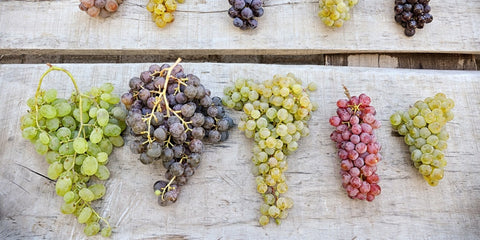Understanding Australian Wine Labels: A Guide to Reading Wine Bottles
Decoding an Australian wine label might seem like a challenge at first, but understanding what you're reading helps you make informed choices about your wine purchases. Let's explore every element you'll find on an Australian wine label and what it means for the wine in your glass.
Geographical Indicators (GI)
Australian wine regions are legally protected, similar to European appellations. When you see "McLaren Vale" or "Barossa Valley" on a label, it means at least 85% of the grapes must come from that region. This system, established in 1993, guarantees regional authenticity in your bottle.
Regional Hierarchy
Our labelling system includes several levels:
- State (South Australia, Victoria)
- Zone (Greater Adelaide)
- Region (McLaren Vale, Barossa Valley)
- Sub-region (Seaview, Willunga)
Variety Labelling
Australian wine law requires 85% minimum of the stated variety in varietal wines. This means when you see "Shiraz" on the label, you're getting a wine that's predominantly made from Shiraz grapes. Some key points about variety labelling:
- Single variety: Must contain at least 85% of the named grape
- Dual varieties: Listed in descending order of proportion
- Multi-blends: May be labelled as "Red Blend" or similar
Vintage Dating
The harvest year on Australian wines tells an important story:
- Non-vintage (NV): Common in sparkling wines, a blend of multiple years
- Single vintage: At least 85% must be from the stated year
- Vintage conditions matter: Consider our local weather patterns
Alcohol Content
Australian law requires alcohol content to be stated within 1.5% of actual content. This appears as "Alc/Vol" or "Alcohol 14.5% by Volume." Understanding alcohol levels helps with:
- Food pairing decisions
- Style expectations
- Storage requirements
Estate Bottled
This term on Australian labels means:
- Grapes grown on winery-owned or controlled vineyards
- Wine made entirely at the stated winery
- Higher level of quality control throughout production
Other Important Terms
Reserve
Unlike Europe, "Reserve" has no legal definition in Australia. However, it typically indicates:
- Higher quality wine
- Special selection
- Limited production
Old Vines
While not legally defined, "Old Vines" in Australia often means:
- Vines over 35 years old
- More concentrated flavours
- Historic significance
Quality Classifications
Wine Quality Levels
Traditional indicators include:
- Table wine
- Premium
- Super premium
- Ultra premium
Understanding Back Labels
Back labels often provide:
- Tasting notes
- Food pairing suggestions
- Winemaking information
- Storage recommendations
- Standard drinks information
Organic and Biodynamic Certification
Look for these certifications:
- Australian Certified Organic (ACO)
- NASAA Certified Organic
- Demeter Biodynamic Certification
Wine Show Medals
Australian wine shows use a medal system:
- Gold: 18.5-20 points
- Silver: 17-18.4 points
- Bronze: 15.5-16.9 points
Additional Label Elements
Government Requirements
Every Australian wine label must show:
- Standard drinks information
- Contains sulphites (if applicable)
- Pregnancy warning
- Volume
Product Codes
Understanding batch codes:
- Production date
- Bottling line
- Quality control tracking
Emerging Trends in Wine Labelling
Modern Australian labels might include:
- QR codes linking to detailed information
- Sustainability credentials
- Carbon neutral certification
- Vegan-friendly designation
Regional Label Variations
Different regions might emphasise:
- McLaren Vale: Often highlights soil types
- Barossa: Old vine designations
- Margaret River: Maritime influence
- Tasmania: Cool climate characteristics
Understanding Producer Codes
The codes on Australian wine labels can tell you:
- L-XXXX: Producer licence number
- State of production
- Bottling facility
Visit Our Cellar Door
At McLaren Vale Cellars, we're happy to guide you through our wine labels and explain what makes each wine special. Our staff can help you understand the story behind every bottle, from vintage conditions to winemaking choices.
Remember, Australian wine labels are your window into what's in the bottle. Understanding them helps you make informed choices and enhances your wine enjoyment. Whether you're a collector or casual wine drinker, label knowledge helps ensure you're getting exactly what you want in your glass.




Comments (0)
There are no comments for this article. Be the first one to leave a message!